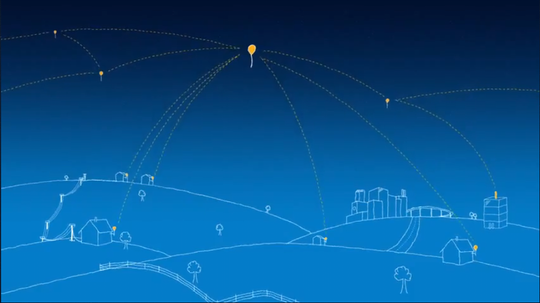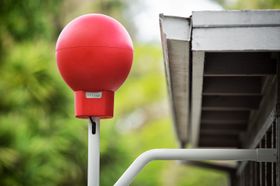Google rates high in his new project.
Google is not unfamiliar to set bold targets, and it is clear that the company behind the world’s most used search engine constantly has ambition. Their latest antics involving balloons namely to ensure Internet access to the world’s rural areas.
Flying High
class=”c2″> With custom balloons equipped with communications equipment and radars, Google will provide internet to the world’s nooks and crannies where it is not cost effective or otherwise possible to build infrastructure.
 A solar panel hangs below the balloon and provides enough energy to control up or down through air currents. Photo: Google
A solar panel hangs below the balloon and provides enough energy to control up or down through air currents. Photo: Google – The idea behind the project is that it is easier to give the world the Internet through what we have in common, namely heaven, but to pull fiber and develop mobile web, says an employee of the department who is behind the project said.
balloons sent up into the stratosphere, which is 20 kilometers up in the air and far airspeed controlled airspace. Here they run away and provides Internet access to 40 acres under him. We did not leave the balloons some form of engine power, but rather the ability to ascend or n ed, by means of a system which receives power from more solar panels.
How they managed to wherever they are needed in an energy efficient manner, follow air currents in different parts of statorfæren.
 Google balloons drifting high in the stratosphere. Screenshot: Google
Google balloons drifting high in the stratosphere. Screenshot: Google
a balloon sent up and it initiates a controlled descent after about 100 days of service, it communicates with Google’s control center on the ground. Here are powerful machines that observe the balloons and uses weather data to figure out what height they must be in order to move to the correct area. Since balloons powered by solar energy must also be taken into account battery capacity, whether they are about to drive into an area where it is night.
 receiving equipment mounted on a house in New Zealand . Photo: Google
receiving equipment mounted on a house in New Zealand . Photo: Google yet tested balloons with around 50 users in New Zealand. These are internet with 3G speed, through a specially built receiver that is mounted on their houses. Of the many attempts balloons floating in the sky, the balloon at any given time is closest to the house that provides Internet access.
Shall secure network to the Third World
I hope that the balloons on their face may have as many as two-thirds of those who do not have Internet today access. We also anticipate that the balloons can be of great assistance during natural disasters or other situations where the infrastructure is knocked out or does not exist. Areas in Africa also drawn up as an example, where access to the Internet will mean a lot for education.
But not everyone has as much faith in the project:
– Due to the vagaries of weather, it is very difficult to control devices that are lighter than air, says Alan Woodward, a professor at the University of Surrey said.
He believes Google is facing a harder job than they expect, if they want to get the system to act independently in a good way.
If the project is a success or not, you do not need to be worried about getting Internet balloons in the head – they are of course equipped with parachutes.
Have you seen the inside of Google’s data center?
(Sources: BBC and Google Project Loon)
No comments:
Post a Comment